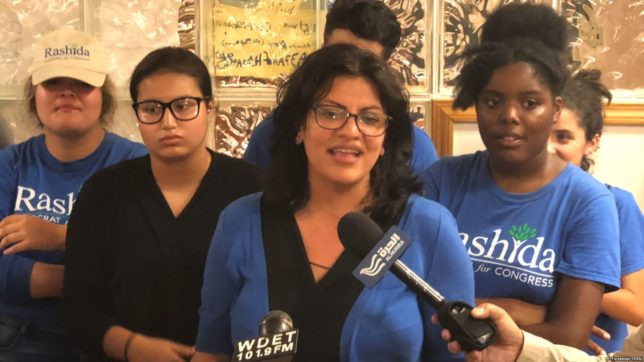“Destruction of the embryo in the mother’s womb is a violation of the right to live which God has bestowed upon this nascent life. To raise the question whether we are here concerned already with a human being or not is merely to confuse the issue. The simple fact is that God certainly intended to create a human being and that this nascent human being has been deliberately deprived of his life. And that is nothing but murder.” – Dietrich Bonhoeffer
“A young pregnant wife has been hospitalized for a simple attack of appendicitis. The doctors had to apply ice to her stomach and when the treatments ended the doctors suggested that she abort the child, they told her it was the best solution because the baby would be born with some disability, but the young brave wife decided not to abort, and the child was born. That woman was my Mother and I was the child.” (And yes, he is blind, and he has a voice like the angels.) Andrea Bocelli – Listen to him sing “O Holy Night”
To compel a man to subsidize with
his taxes the propagation of ideas which he disbelieves and abhors is sinful
and tyrannical. Thomas Jefferson
Life, liberty and the pursuit of happiness is not guaranteed to unborn human
babies in America. Yet, if you’re
pronounced dead when your heart stops beating, why are we not pronounced alive
when an unborn baby’s heart is heard beating?
Within 16 to 24 days after conception, the unborn child’s heart can be
heard, especially via ultrasound.
Doctors use several different
methods to listen to the fetal heartbeat. At about 3 weeks, when the heart
first begins to beat, the sound of the little heart is too soft to hear. A
doctor’s stethoscope is not sensitive enough to hear the baby’s heart beating. Very soon thereafter however, physicians can
see the motion using ultrasound technology.
A special stethoscope called a
fetoscope works well when the unborn baby is larger, usually around 15-17
weeks. An active baby however, can make this method of listening a bit
challenging. Often when the fetoscope is finally in the right place on the
woman’s belly, the unborn baby will change positions and the doctor must move
the stethoscope again in search of the heartbeat.
The presence of a fetal heartbeat
confirms pregnancy, as long as doctors are certain to distinguish the baby’s
heartbeat from the mothers. Usually this is not difficult as the unborn baby
has a much faster heart rate than the mother.
State Heartbeat Bills
In the landmark Roe v.
Wade ruling in 1973, the U.S. Supreme Court said states can’t abolish
abortions before viability — the point at which a fetus can survive outside of
the womb which is 24 to 28 weeks gestation; full gestation is 40 weeks.
But pro-life advocates hope a newly configured U.S. Supreme Court can overturn the decision and are pushing for measures to undercut the ruling in legislatures across the country. Seven states now allow abortion up to the minute of birth, not just New York. Heartbeat bills get challenged by the courts, but abortions in the last trimester or minutes before birth do not.
Iowa – A federal court blocked a
heartbeat abortion measure in Iowa after it passed into law over the summer. In mid-February 2019, Iowa Gov. Kim Reynolds
said that she will not appeal a ruling that struck down a state law that banned
most abortions after a fetal heartbeat is detected. Her decision not to appeal means the law will
never take effect, handing a major victory to supporters of legal abortion.
Reynolds signed the law – which would have been the most restrictive abortion limit in the country – last year. Abortion providers quickly sued and District Court Judge Michael Huppert ruled the law unconstitutional.
Reynolds said in a news release that she doesn’t see a way to successfully appeal the ruling to the Iowa Supreme Court, in light of its ruling last year that struck down a 72-hour waiting period for abortions and found a fundamental right to abortion in the Iowa Constitution.
Arkansas – A fetal heartbeat bill, banning abortion after twelve weeks, was passed on January 31, 2013 by the Arkansas Senate, vetoed in Arkansas by Governor Mike Beebe, but, on March 6, 2013, his veto was overridden by the Arkansas House of Representatives. A federal judge issued a temporary injunction against the Arkansas law in May 2013, and in March 2014, it was struck down by federal judge Susan Webber Wright, who described the law as unconstitutional.
North Dakota – North Dakota HB 1456 was signed into law in March 2013 by former Governor Jack Dalrymple, who stated that it was “a legitimate attempt by a state legislature to discover the boundaries of Roe v. Wade. A federal district court found that it clearly violated the constitutional protections afforded in Roe v. Wade and it was quickly blocked.
In July of that year, a lawsuit had been filed with regard to the law by the Center for Reproductive Rights (CRR) on behalf of the only abortion clinic in North Dakota, Red River Women’s Clinic. In July 2015, the 8th U.S. Circuit Court of Appeals blocked the bill. The case was appealed to the Supreme Court, but the court denied a writ of certiorari in January 2015 and let stand the decision of the 8th Circuit Court of Appeals.
North Dakota spent $491,016 to unsuccessfully defend the laws, and also paid the clinic’s lawyers $245,000 as part of a settlement. Other states should take notice. Link
Federal courts have already struck down similar “heartbeat
bills” including the 20 week bans in Arizona and Idaho.
Kentucky – Already mired in three lawsuits over abortion restrictions, Kentucky lawmakers are ratcheting up the stakes with a new bill to ban most abortions once a fetal heartbeat is detected. In January of 2017, Pro-life Kentucky Gov. Matt Bevin signed two pro-life bills into law: The Pain-Capable Unborn Child Protection Act (SB5) and a bill that offers an abortion-minded woman the opportunity to see an ultrasound of her unborn child (HB2). Link I like both of these bills. They eat away at the ability of abortion clinics to kill our babies.
SB5, like the laws in Alabama, Arkansas, Georgia, Idaho, Kansas,
Louisiana, Nebraska, North Dakota, Ohio, Oklahoma, South Carolina, South
Dakota, Texas, West Virginia, and Wisconsin, says you cannot abort a child
capable of experiencing pain, a capacity that medical science has demonstrated
takes place no later than at 20 weeks.
Tennessee – State Representative Micah Van Huss has rewritten his original heartbeat bill. It is HB0077. State Senator Mark Pody introduced SB1236. Both bills require the person attempting to do the abortion to check for the unborn baby’s heartbeat. In reading Senator Pody’s bill, it appears as though ultrasound is always done, and it is not. If our new Governor, Bill Lee, signs onto the heartbeat bill, I am sure, like other states, it will be challenged in court.
Here is a complete list of states who have tried to pass heartbeat bills.
Abortion
Providers
All pro-lifers are praying to save our unborn human babies. We want the murders stopped, but each of the heartbeat bills are challenged because of the original Roe v. Wade decision regarding viability of life. The very text of these bills leaves it up to the abortion provider to check for a heartbeat. Check the summary of Tennessee’s House Bill 0077. These bills put the requirement of the finding the heartbeat on the person least likely to want to find a heartbeat—the abortion doctors themselves.
Are we to believe every abortion clinic is going to hire a certified pro-life
ultrasound nurse who will honestly do the work required to find a heartbeat…the
pressing, searching, roving, seeking with the tools required to find a tiny
heartbeat? No. And why would they?
Ultrasound is completely operator dependent. One can manipulate the scan
however they want. And in the hands of an abortion provider, that scan can
prove to be deadly.
Killing unborn babies is a huge cash crop. Abortion providers know this. And why would an abortion doctor tell a woman in her third trimester that the heart can be heard when they make far more money on selling baby parts from late term abortions.
Abortion is a very lucrative business, and this has been true from the beginning. By last count, Planned Parenthood (a tax-exempt organization!) has $951 million in total assets! Marvin Olasky observes and documents in his book, Abortion Rites, that there have long been doctors who supported abortion, “if not for principle, at least for principal.” Link
It’s all about money, that’s the bottom line. Pro-life lobbyists think up these bills, and
then pound their chests in pride, and when it fails, this allows them to ask
for more money to fight for this useless law in court, all the while bragging
about how many lives that will be saved because laws like this magically make
abortion doctors have “good faith.” They know abortion providers will never act
in good faith with the heartbeat bills.
Supreme Court and Roe
Courts don’t make laws, although in today’s America, our
President is stopped by leftist judges from carrying out his constitutional
duties. Prior to Roe v.
Wade abortion was illegal in 30 states and legal under certain
circumstances in 20 states.
It was a state decision and it should have remained so.
We have to stop placing our trust in multi-million-dollar
lobby groups and instead place our trust in the King of Glory. Keep working, and keep praying because
President Trump may actually have an opportunity to put one or two more pro-life
justices on the Supreme Court.
If that were to happen, and Roe was overturned, the State of Tennessee already has bills in both houses of our legislature that will protect our unborn babies. The Human Life Protection Act (SB 1257 / HB 1029) avoids constitutional challenges by taking effect upon reversal, in part or in full, of Roe v. Wade by the U.S. Supreme Court. It restores Tennessee’s pre-Roe law and prohibits abortion except to save a mother’s life. Such policies have been enacted in Louisiana, Mississippi, North Dakota, and South Dakota. Similar legislation is presently being considered in other states such as Kentucky and Arkansas where it passed the state Senate.
Rep. Susan Lynn (Republican, Mt. Juliet, Tennessee) said, “It
has always been the priority of Tennessee’s pro-life movement to restore
protection to the largest number of unborn children and women in our state.
While states like New York are moving to strip any limits to abortion–even at
the moments just before birth—Tennessee wants to be known for protecting our
children.”
Unfortunately, the heartbeat bill has served to cost states many taxpayer
dollars and in some states, those dollars went to the very perpetrators of this
evil. How? Many of the lawyers for the pro-abortion proponents
sit on the boards of Planned Parenthood.
Conclusion
America has embraced a culture of death. The slaughter of our unborn even at the moment of birth is an atrocity of satanic proportions which needs to be quelled. Roe v. Wade needs to be overturned. Proponents of abortion thrill to dancing in the blood of these babies. New York Governor Cuomo was overjoyed to pass his infanticide bill promoting abortion at the very moment of birth. Molech would be proud.
The United States Senate voted on an anti-infanticide bill introduced by Senator Ben Sasse (R-Neb.), the Born-Alive Abortion Survivors Protection Act. The legislation needed 60 votes to pass, and it failed by a vote of 53 in favor and 44 against. The bill stated that “if an abortion results in the live birth of an infant, the infant is a legal person for all purposes under the laws of the United States, and entitled to all the protections of such laws.” Link Babies of botched abortions have been left crying for hours to die alone.
A day after
Senate Democrats voted to block a bill to stop infanticide, House
Democrats blocked a request by Republicans to vote on a similar bill to require
medical care and treatment for babies who survive abortions.
This is the 10th time Congressional Democrats thwarted an attempt by Republicans to vote on a bill that would provide medical care and treatment for babies who survived failed abortions — eight times in the House and twice in the Senate.
Every Democratic presidential hopeful — Kamala Harris, Cory Booker, Kirsten Gillibrand, Sherrod Brown, Amy Klobuchar, and Elizabeth Warren, along with Independent Senator Bernie Sanders of Vermont — voted against this common-sense bill. Democrats Doug Jones, Joe Manchin, and Bob Casey Jr. voted in favor of the bill. Lisa Murkowski (R-Alaska), Tim Scott (R-S.C.), and Kevin Cramer (R-N.D.) did not vote on the bill. Where were they?
RELATED ARTICLE: Watch: Warren Visibly Flustered After Audience Member Corners Her On Infanticide Position
EDITORS NOTE: This column with images is republished with permission. The featured photo is by Maria Oswalt on Unsplash.





















